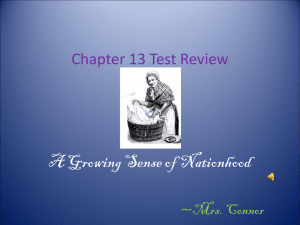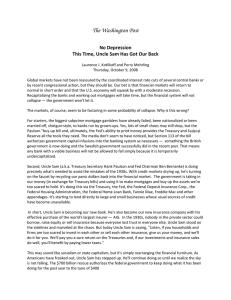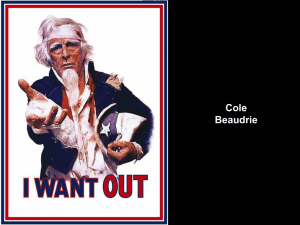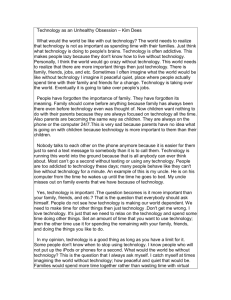Running a National Sale RGE Monitor
advertisement
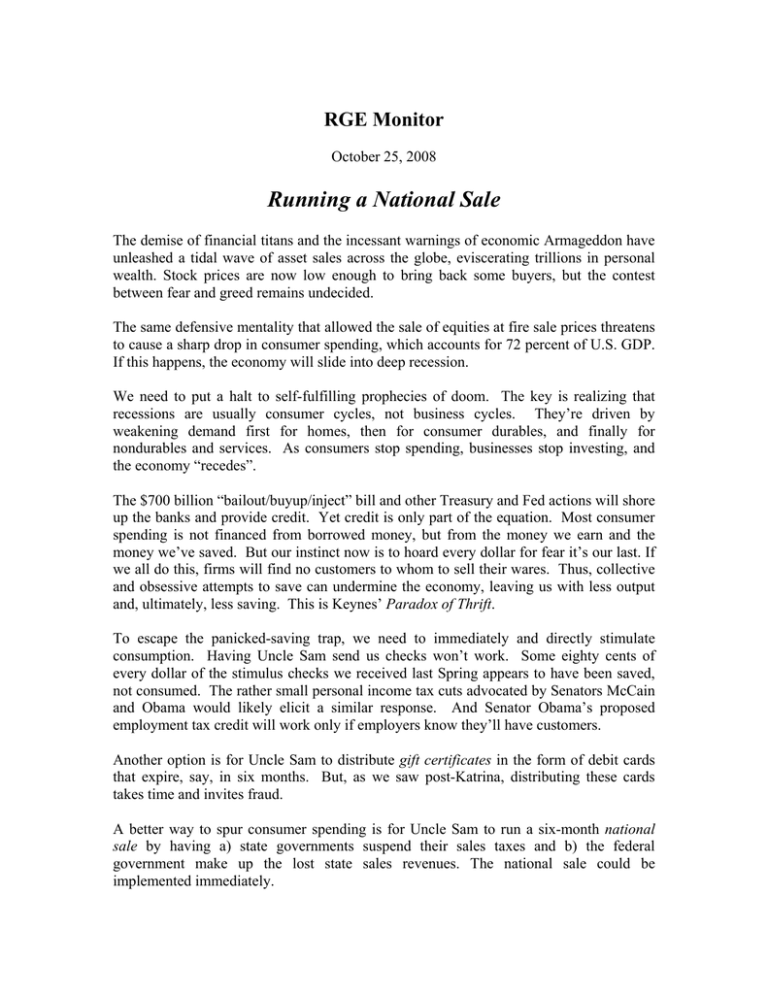
RGE Monitor October 25, 2008 Running a National Sale The demise of financial titans and the incessant warnings of economic Armageddon have unleashed a tidal wave of asset sales across the globe, eviscerating trillions in personal wealth. Stock prices are now low enough to bring back some buyers, but the contest between fear and greed remains undecided. The same defensive mentality that allowed the sale of equities at fire sale prices threatens to cause a sharp drop in consumer spending, which accounts for 72 percent of U.S. GDP. If this happens, the economy will slide into deep recession. We need to put a halt to self-fulfilling prophecies of doom. The key is realizing that recessions are usually consumer cycles, not business cycles. They’re driven by weakening demand first for homes, then for consumer durables, and finally for nondurables and services. As consumers stop spending, businesses stop investing, and the economy “recedes”. The $700 billion “bailout/buyup/inject” bill and other Treasury and Fed actions will shore up the banks and provide credit. Yet credit is only part of the equation. Most consumer spending is not financed from borrowed money, but from the money we earn and the money we’ve saved. But our instinct now is to hoard every dollar for fear it’s our last. If we all do this, firms will find no customers to whom to sell their wares. Thus, collective and obsessive attempts to save can undermine the economy, leaving us with less output and, ultimately, less saving. This is Keynes’ Paradox of Thrift. To escape the panicked-saving trap, we need to immediately and directly stimulate consumption. Having Uncle Sam send us checks won’t work. Some eighty cents of every dollar of the stimulus checks we received last Spring appears to have been saved, not consumed. The rather small personal income tax cuts advocated by Senators McCain and Obama would likely elicit a similar response. And Senator Obama’s proposed employment tax credit will work only if employers know they’ll have customers. Another option is for Uncle Sam to distribute gift certificates in the form of debit cards that expire, say, in six months. But, as we saw post-Katrina, distributing these cards takes time and invites fraud. A better way to spur consumer spending is for Uncle Sam to run a six-month national sale by having a) state governments suspend their sales taxes and b) the federal government make up the lost state sales revenues. The national sale could be implemented immediately. Here’s how it would work. Uncle Sam would pay each state a fixed percentage – say 5 percent -- of the 2007 consumption of its residents. States would be required to reduce their retail sales tax rates by enough to generate a six-month revenue loss (calculated using 2007 data) equal to the amount they’ll receive from Uncle Sam. For states with low or zero sales tax rates, implementing this policy requires making their sales tax rates negative, i.e., subsidizing purchases. Shoppers would see a negative tax on their sales receipts, lowering their outlays. State governments would reimburse businesses for paying the subsidy and, in turn, be reimbursed by the Feds. States would be free to broaden their sales tax bases to apply the National Sale to all retail sales, not just the sales currently covered in their sales tax systems. To make the policy progressive, states could also reduce sales tax rates by more for goods and services that are disproportionately consumed by the poor. Would some retailers try to cheat the system and request reimbursement for subsidies they didn’t actually make? Yes. But stiff penalties and vigorous enforcement should make this a minor problem. How big should this stimulus be? A 5 percent national sale extending for six months would cost the Treasury about $250 billion. Can the government afford this? Yes, the cumulated lost production from a deep recession is on the order of 10 percent of GDP – roughly $1.4 trillion, and the associated loss to Uncle Sam in tax receipts and extra transfer payments could easily exceed $300 billion. It’s unlikely that a national sale will prevent a recession. But it should shorten it and reduce its severity. Hence, we suspect that Uncle Sam would quickly recoup much of his costs in running the national sale. No plan is perfect, and this one has its flaws and risks. But it will apply economic medicine where it’s most needed – on consumer spending, giving everyone an incentive to spend now and begin again to trust our economy and its institutions. Laurence J. Kotlikoff is a Professor of Economics at Boston University and co-author of Spend ‘Til the End. Edward Leamer a Professor of Economics at UCLA’s Anderson School of Management and Director of the UCLA Anderson Forecast.


